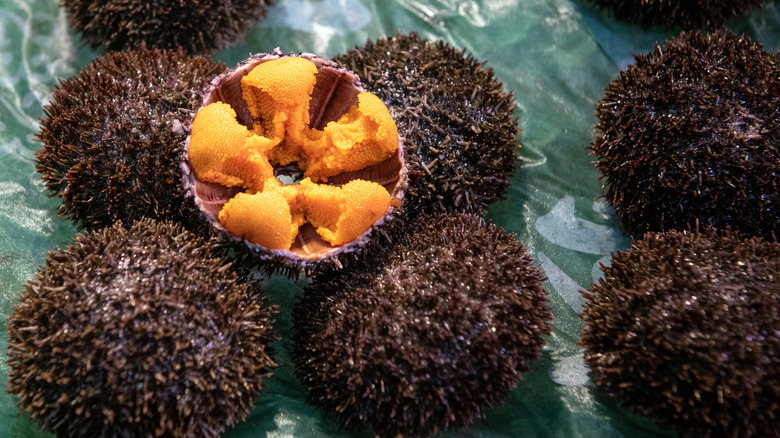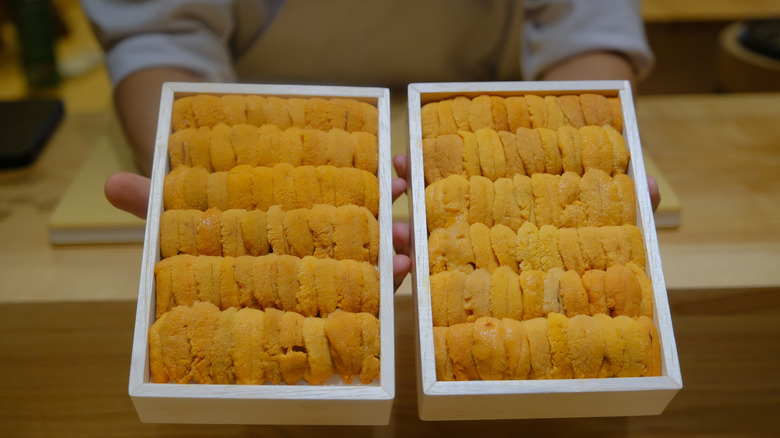The Only Edible Part Of A Sea Urchin Is Truly Unexpected
Sea urchin has been a staple of Japanese cuisine for hundreds of years, often featured in sushi and sashimi dishes. More commonly called "uni" when it appears on menus, the delicacy has taken over high-end sushi restaurants around the world and also pops up in gourmet sauces and fusion dishes. When you first look at a sea urchin in its native habitat, clinging to a reef, edible is probably not the first thing that comes to mind. But, upon carefully cracking that spiny shell, you'll see five orange, sponge-like "tongues."
Though these tongues are often believed to be roe, the edible parts of the sea urchin are actually its reproductive organs or gonads. Sea urchins can be male or female, so those creamy orange lobes you're about to scoop up are either its ovaries or testicles. Hungry yet? Just one of these tongue blobs, commonly served as a single piece of sashimi, can go for $15 a piece at a fancy sushi restaurant.
Uni has as many fans as it has haters. Gourmands who love it say it's the creamy texture and oceanic flavor that keeps them paying those high prices. Meanwhile, less-than-enthusiastic users on one Reddit thread described it as "beach mud" and "fish pudding." Of course, freshness is everything when it comes to uni. Once the urchin is carved out of its shell, it begins to degrade, and the flavor quickly goes downhill from there. Ideally, uni should be cleaned, iced, and shipped as quickly as possible to preserve those salty sea flavors.
Why is uni so pricey?
One of the reasons uni is so expensive is that it's one of the only seafoods still hand-harvested today. While there are hundreds of sea urchin species, only a select few are edible. Skilled divers, often wearing snorkeling or scuba gear, will search for urchins along the ocean's rocky floor, particularly among reefs and kelp beds. This diving practice has gone on for centuries, with one of the more fascinating aspects being the tradition of female free divers in Asia. In Japan, they're called "Ama," where they also dive for pearls, and off the coast of South Korea, "haenyeo" divers are celebrated as one of the island's most valued cultural treasures. Now a dying field because of its aging workforce, these older women are esteemed for their independent spirits and for turning the patriarchal family structure on its head.
While many claim the best sea urchin comes from Japan's northerly island of Hokkaido, because of its pristine kelp beds, the United States also boasts two urchin hot spots of its own: Santa Barbara and Maine. If you feel like foraging for some yourself, you'll need a special tool for prying these "hedgehogs of the sea" off their perch, as they're extremely spiky and sometimes poisonous, although rarely fatal. Time is of the essence when it comes to gobbling down these gonads: once opened, they only last about two days in the fridge. This is one expensive snack you'll never want to save for later.

